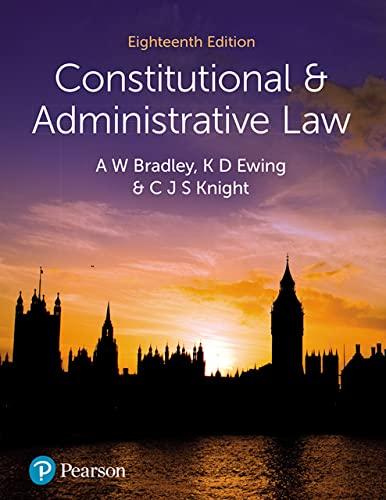Question
Looking for a tutor who is: A: Familiar will Australian workplace Relations laws B: Good with writing, spelling, grammar, punctuation etc. The reason for this,
Looking for a tutor who is:
A: Familiar will Australian workplace Relations laws
B: Good with writing, spelling, grammar, punctuation etc.
The reason for this, is because I am looking for some to break this text, which I have attached below down, to use less words and more simpler and without dot points but still conveying the intended message. The text is attached below and relates to casual employees working too many hours in Australia and having little job security, as they are separate heading I would like help combing two paragraphs together so that they segue from one to the other :
Casual Hours
Casual work was supposed to be work that is irregular or intermittent. However the majority of casual employees work the same hours, week in, week out, and often for years. Based on the latest ABS data:
59% of casuals (1.5 million) say they usually work the same hours each week
43% of casuals (1 million) have income that is the same from week to week.
54% of casuals (1.3 million) have been in that job for more than one year.
28% of casuals (682,000) work full time hours. .
These work arrangements have now been given the painful oxymoron of "permanent casuals". The Courts were starting to clamp down on this practice by determining the key Federal Court cases of WorkPac v Skene and WorkPac v Rossato that workers on such arrangements should rightly be permanent workers and receive the backpay owing. In response the former Morrison Government amended the Fair Work Act in early 2021 to make it legal to employ anyone as "permanent casuals", and effectively deny anyone fair backpay in the Skene or Rossato scenarios. The new definition of "casual" only considers what happens at the point an offer of employment is made, and not what happens after that. There is nothing to stop an employer getting a new employee to sign a contract stating that they are a casual with no firm advance commitment to continuing work, but to then put them on permanent hours the next day. Even KPMG, the big four accounting firm that gives big business workplace relations advice, said that these new laws could "permit an employer to engage a casual employee under a sham arrangement" and recommended the law be changed. 6 The Morrison Government also included a "casual conversion" process at the same time which requires an employer to offer permanent employment to a casual if they had been employed for 12 months, have worker a "regular pattern of hours on an ongoing basis for at least the last 6 months", and the business does not have "reasonable grounds for not making an offer". In practice this mechanism has been next to useless. Some unions report that as few as 1% of casual employees in workplaces are being converted to permanent employment.7 A key problem is that if an employer rejects a casual conversion claim on "reasonable grounds", the recourse for an employee is painfully limited.
Job Insecurity
No security over hours While many casuals are permanent in all put name, another cohort of casuals have a different problem: being denied enough hours of work. Here, the issue of low pay is even worse if you can't secure the hours of work that you need. Underemployment - those in work but wanting to work more hours - has grown significantly over the past decade, prior to the pandemic. And it is casual workers working less than full time hours that have borne the brunt of it. part time casuals dominate the ranks of workers wanting more hours, consistently making up about 70% of all underemployed workers. Permanent fulltime workers started to struggle for hours during the depths of the pandemic in 2020, but the only reason casuals didn't struggle as much then was because hundreds of thousands had lost work altogether over that period. When considering the rates of underemployment by work status, more than 1 in 3 part time casuals typically need more hours of work as Figure 6 shows. Encouragingly, these figures have dropped recently in response to the tight labour market, dropping the underemployment rate down to about 1 in 4 for part time casuals. But the evidence is clear: part time casuals are used by business as shock absorbers against shifts in the economy labour market. If it worsens, they will be the first to lose the hours that they need.
Step by Step Solution
There are 3 Steps involved in it
Step: 1

Get Instant Access to Expert-Tailored Solutions
See step-by-step solutions with expert insights and AI powered tools for academic success
Step: 2

Step: 3

Ace Your Homework with AI
Get the answers you need in no time with our AI-driven, step-by-step assistance
Get Started


